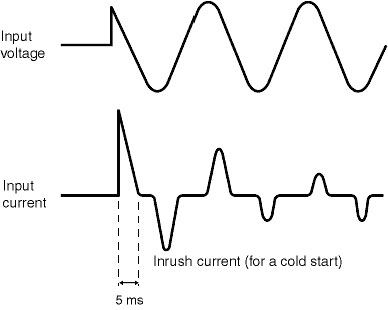How long does the inrush current from the Power Supply continue to flow?
About 5 ms as a general rule. An inrush current will occur regardless of the load, even when there is no load.
Inrush Current
When the power is turned ON for a Switching Power Supply, a peak current flows to charge the input smoothing capacitor. This is called inrush current.
The inrush current value depends on the timing at which the power is turned ON, and on the inrush current prevention circuit, but it can be anywhere from several times to several tens of times higher than the input current during normal operation.